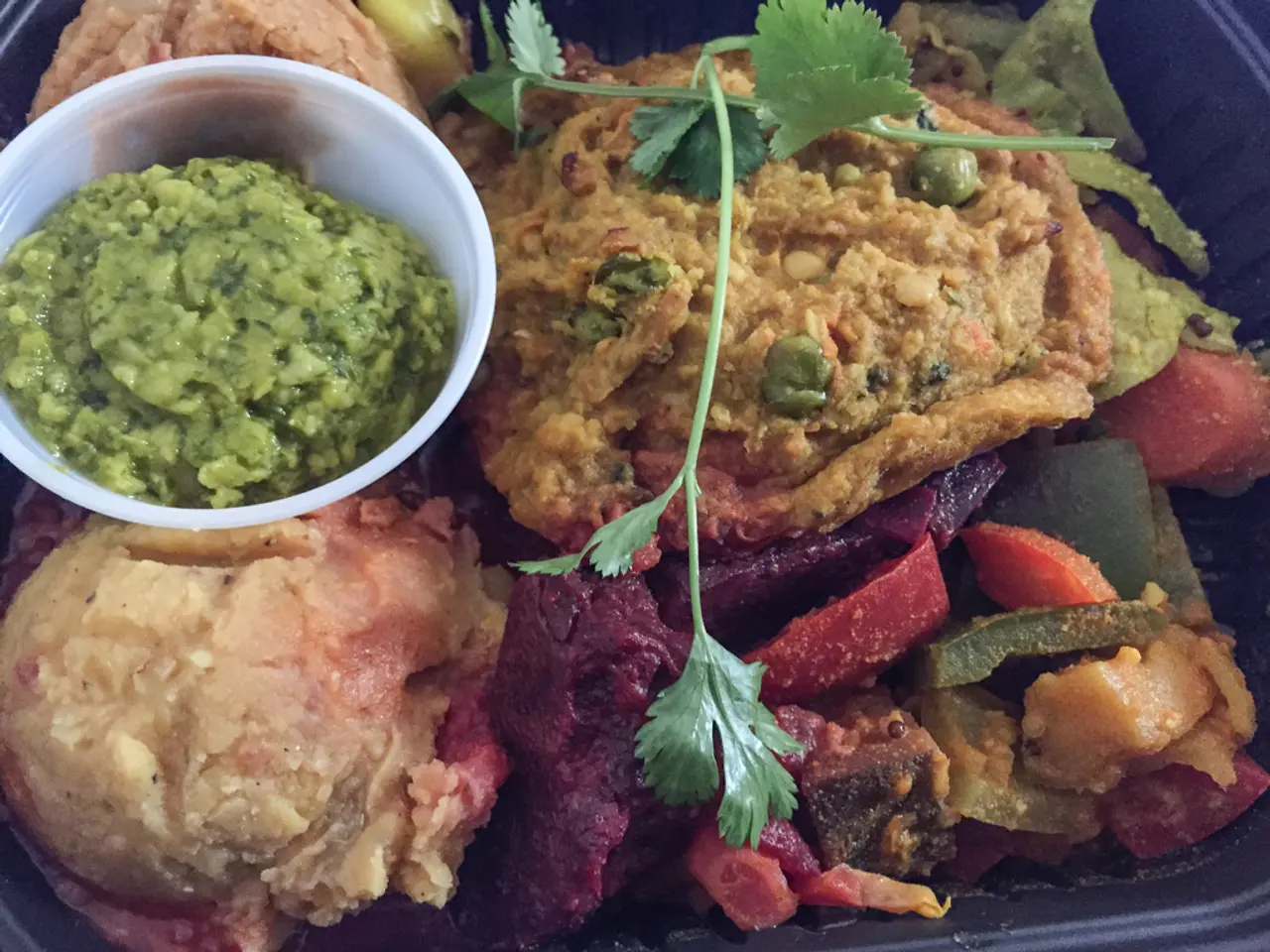Distinguishing Culantro from Cilantro: An Examination of the essential differences between two fragrant herbs
In the world of herbs, two powerhouses stand out, each with its unique characteristics and distinct roles in the kitchen: culantro and cilantro. These herbs, while sharing some similarities due to their relatedness, offer a myriad of differences that set them apart.
Culantro, scientifically known as Eryngium foetidum, hails from Central and South America and thrives in tropical climates. It is a biennial herb that produces long, spiny, saw-toothed leaves, often compared to pineapple leaves with flower buds. In contrast, cilantro is an annual herb that produces soft, feathery leaves and small seeds known as coriander. It is native to the Mediterranean region and prefers cooler climates.
The aroma and flavor profiles of these herbs are strikingly different. Culantro possesses a much stronger, pungent aroma and flavor, often described as musky or bitter with citrus hints. Cilantro, on the other hand, is known for its lighter, fresher, citrusy, and zesty flavor, with varieties ranging from bright citrusy to earthy or spicy, but generally milder than culantro.
Culantro's intense flavor makes it suitable for tropical and Caribbean dishes, where it is often used in cooked form to soften its potency. Cilantro, however, is more versatile globally, frequently used fresh in salsas, salads, and as a garnish, or cooked into soups, stews, and curries where a lighter herbaceous note is desired.
When it comes to growing conditions, culantro is a perennial herb that thrives in tropical climates with high heat and humidity, while cilantro is an annual herb that prefers cooler climates and is common worldwide. Culantro prefers humid environments and partial shade, growing well in rich, moist soil, and is ideal for container gardening and shaded beds due to its low-growing rosette pattern.
While specific data on culantro nutrition is limited, it is related to cilantro and likely contains antioxidants and vitamins typical to Apiaceae family herbs. Cilantro is known for being rich in vitamin A, C, and K, as well as antioxidants.
Understanding these distinctions helps in selecting the right herb for your culinary needs and growing conditions, as well as appreciating their unique roles in different cuisines. Culantro is integral to the cuisines of the Caribbean, Latin America, and Southeast Asia, while cilantro is widely used worldwide in Latin American, Asian, and Middle Eastern dishes.
In the kitchen, it's essential to remember that culantro's strong flavor can overwhelm a dish if not measured carefully. When substituting culantro for cilantro, one should use much less, roughly one-third of the amount called for in the recipe. Culantro leaves can be stored in a refrigerator wrapped in a damp paper towel for up to ten days, while cilantro typically lasts for about a week.
In some cultures, culantro tea is consumed to soothe inflammation or relieve stomach pain, and it has been traditionally used in herbal medicine to treat fever, high blood pressure, asthma, and digestive issues. It is believed to have antibacterial properties and may help reduce heavy metal toxicity in the body.
In conclusion, whether you're a seasoned chef or a home cook, understanding the differences between culantro and cilantro can elevate your dishes and broaden your culinary horizons. Embrace these unique herbs and explore the rich flavors they bring to your table.
- In the realm of cooking and food-and-drink, culantro and cilantro, two distinct herbs, offer diverse flavor profiles that can enhance global-cuisines.
- For home-and-garden enthusiasts, understanding the growing conditions of these herbs – culantro thriving in tropical landscapes while cilantro prefers cooler climates – is key for successful cultivation.
- Recipes incorporating both herbs can add an extra dimension to various dishes, showcasing the unique roles they play in different cuisines around the world, from tropical Caribbean dishes to versatile Middle Eastern recipes.




